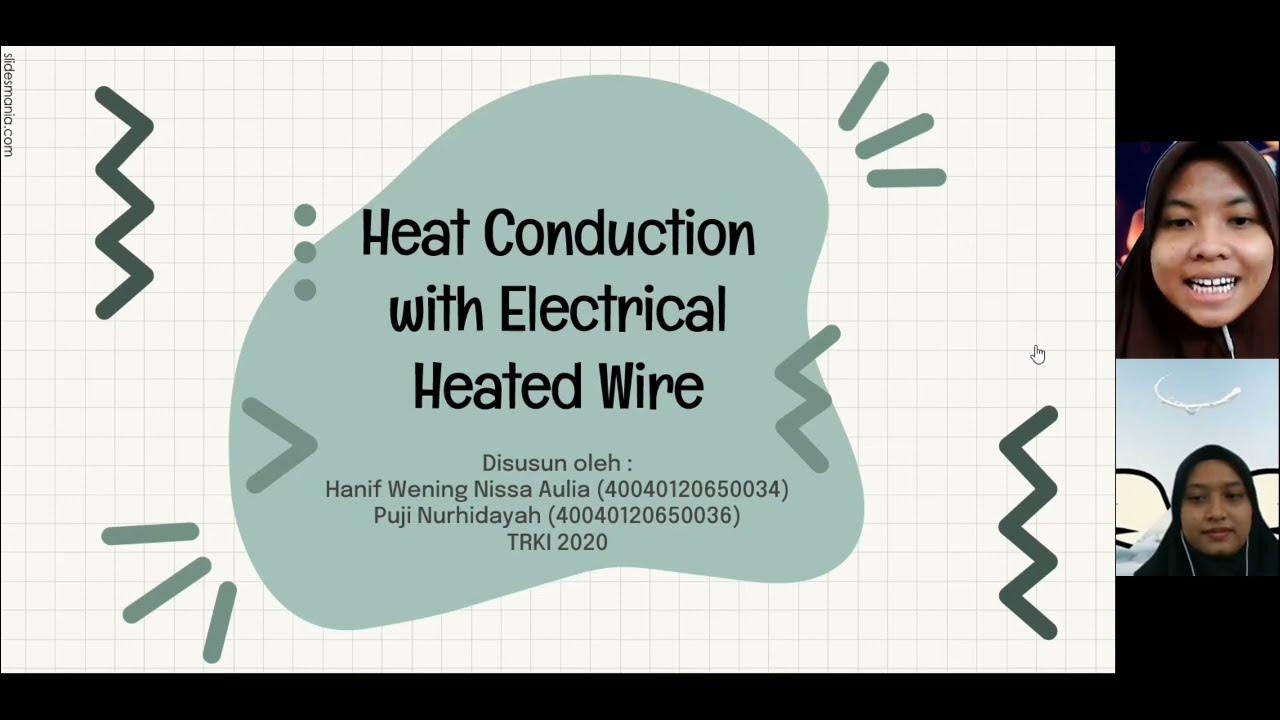KALOR DAN PERPINDAHAN KALOR SERTA CONTOH SOAL DAN PENYELESAIANNYA|| Kelas XI SMA || Gasal
Summary
TLDRThis video provides an in-depth exploration of heat and heat transfer, explaining the concepts of caloric energy, its transfer, and how it affects materials. The lesson covers key principles like heat capacity, specific heat, and the different forms of heat transfer (conduction, convection, and radiation). Through engaging examples and calculations, such as determining the energy required for melting ice or heating water, the video illustrates the science behind everyday thermal processes. Additionally, the video touches on the effects of material properties like specific heat and thermal conductivity, enhancing viewers' understanding of thermal energy in practical applications.
Takeaways
- 😀 Calor is the energy transferred from one system to another due to a temperature difference, typically moving from a hotter object to a cooler one.
- 😀 The unit of calor is Joules (J), and 1 calorie equals 4.2 Joules, while 1 Joule equals 0.24 calories.
- 😀 Calor transfer can be demonstrated by the example of pouring hot water into a room temperature glass, causing the glass to warm up.
- 😀 The formula for calor is Q = m × c × ΔT, where Q is the heat transferred, m is mass, c is the specific heat capacity, and ΔT is the temperature change.
- 😀 The specific heat capacity of a material indicates how much heat it can absorb, with materials like aluminum having higher capacities compared to metals like iron and copper.
- 😀 The concept of specific heat capacity is demonstrated with an example calculating the heat released by cooling 15 grams of water from 80°C to 20°C.
- 😀 Calor can also be related to phase changes, with latent heat involved in melting, freezing, or vaporization of substances.
- 😀 The principle of calor transfer during phase changes involves formulas like Q = m × L for latent heat, where L is the latent heat of fusion or vaporization.
- 😀 The concept of thermal equilibrium is introduced through the Black's principle, where the heat lost by a hotter object equals the heat gained by a cooler one.
- 😀 The methods of heat transfer include conduction (direct transfer through materials), convection (transfer via fluids), and radiation (transfer via electromagnetic waves).
Q & A
What is calor and how does it transfer?
-Calor (heat) is energy transferred from one system to another, usually with a change in temperature. It typically flows from objects with higher temperatures to those with lower temperatures.
What are the units of heat, and how do they relate to each other?
-The unit of heat is Joules (J), but another unit, 'calorie' (cal), is also used. One calorie equals 4.2 Joules, and one Joule equals 0.24 calories.
How is heat calculated in a system?
-Heat is calculated using the formula Q = m × c × ΔT, where Q is the heat transferred, m is the mass of the substance, c is its specific heat capacity, and ΔT is the change in temperature.
How does specific heat capacity influence the absorption of heat?
-A substance with a higher specific heat capacity can absorb more heat without its temperature rising as much, meaning it takes longer to heat up or cool down.
How do you calculate the amount of heat released when cooling a substance?
-To calculate the heat released when cooling, you use the formula Q = m × c × (T_initial - T_final), where T_initial is the initial temperature and T_final is the final temperature.
What is the relationship between heat and phase changes in matter?
-During phase changes, heat is either absorbed or released without changing the temperature of the substance. For example, when ice melts or water boils, heat is absorbed. When gas condenses or a liquid freezes, heat is released.
What are the types of heat transfer mechanisms?
-There are three main types of heat transfer: conduction (heat transfer through direct contact), convection (heat transfer through fluid movement), and radiation (heat transfer through electromagnetic waves, like sunlight).
What is the concept of thermal equilibrium in heat transfer?
-Thermal equilibrium occurs when two objects in contact have reached the same temperature, and no further heat transfer takes place between them.
How is the specific heat capacity of a substance calculated?
-Specific heat capacity can be calculated using the formula c = Q / (m × ΔT), where Q is the heat absorbed, m is the mass, and ΔT is the change in temperature.
How is the total heat required for a phase change determined?
-The total heat required for a phase change is calculated using the formulas Q = m × L (for melting or freezing) and Q = m × Lv (for boiling or condensation), where L is the latent heat and m is the mass of the substance.
Outlines

此内容仅限付费用户访问。 请升级后访问。
立即升级Mindmap

此内容仅限付费用户访问。 请升级后访问。
立即升级Keywords

此内容仅限付费用户访问。 请升级后访问。
立即升级Highlights

此内容仅限付费用户访问。 请升级后访问。
立即升级Transcripts

此内容仅限付费用户访问。 请升级后访问。
立即升级5.0 / 5 (0 votes)






